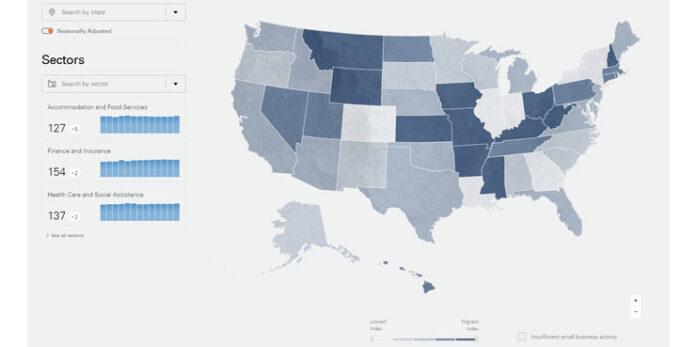Yesterday, Fiserv, a global provider of payments and financial services technology solutions, launched the Fiserv Small Business Index. This measurement tool assesses the health of small businesses at the national, regional and industry levels.
Small Business Data in Real-Time
Published at the beginning of every month, the Fiserv Small Business Index will provide near real-time indexes of consumer spending from the prior month. The index relies on data from approximately 2 million small businesses and is differentiated by its direct aggregation of consumer spending activity based on actual point-of-sale transactions, including card, cash and check transactions, rather than survey data.
The Fiserv Small Business Index provides a numeric value that equates to small business sales activity and growth, with an accompanying transaction index to allow measurement for customer foot traffic in store.
Computing a monthly index for 16 sectors and 34 sub-sectors, including restaurants, retailers, grocery stores, gas stations and service industries, the index is positioned to provide a reliable and consistent measure for performance evaluation over time.
How the Small Business Index Works
According to Mike Spriggs, Director of Consumer Spending Insights at Fiserv, the index is a simple numeric score that follows the same guidelines that are laid out by the Small Business Administration (SBA) to identify small businesses.
“Fiserv also provides a way to explore the data on the website from the index,” Spriggs says. “It features an interactive map with all 50 states that are loaded with data about small businesses. If you click on any state, the performance metrics will show up. It provides data on the national level as a whole, as well as for each state.”

December Data
According to the index’s latest data, spending at small businesses in the U.S. advanced 1 point in December to end the year with an index of 138. This is a +0.6% increase from November and a +2.6% gain over December 2022.
Small business sales gains in December largely reflected consumers’ priorities as the end of the year approached – food and drink, retail and healthcare. The biggest increases in small business spending came from restaurants, clothing and related accessories and ambulatory healthcare services, according to the index.




